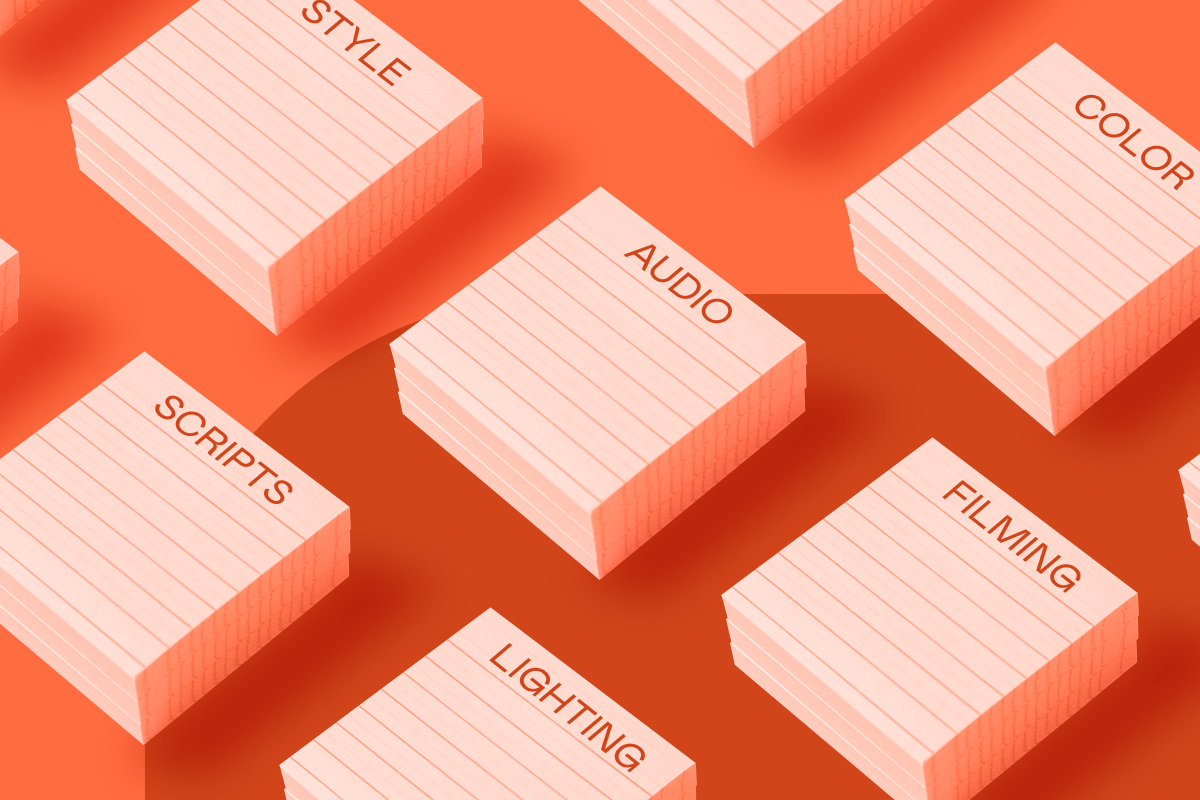Wistia's Guide to Lighting Show Talent: A Step-by-Step Tutorial
May 21, 2021
Topic tags
Stephen Petto
Creative
Lisa Marinelli
Creative
For Show Business, the latest series from Wistia Studios, our production team filmed interviews in 26 locations, featuring all sorts of unique looks and lighting situations. So, this begs the question: How did we make the lighting look consistent across all these different spaces?
Well, our lighting maestro and Show Business video producer, Stephen Petto, had a few tricks up his sleeve. In this post, Stephen gives you a step-by-step tutorial on how he made our show talent look great in every shot by following the tried and true three-point lighting setup. From picking a location to breaking down all the lighting gear we used for Show Business, dig into our Wistia guide for shining the perfect light on show talent.
The basics of three-point lighting
First of all, it’s important to understand the three-point lighting method, which is the industry standard. For three-point lighting, you’ll need a key light, fill light, and a backlight. But, it’s also handy to have a fourth light to use on a background or bring up the ambiance in a room. Three-point lighting is simple and a good way to control shadows.
“Three-point lighting is simple and a good way to control shadows.”
Picking the location
Before you start setting up any lights, you need to scout your shoot location.
When you’re picking a location, one of the biggest things to think about is the space’s natural light. Can you control it with shades? Will it change throughout the day? You want to treat your lighting set up as a way to enhance the light that’s already there.
If you have access to the location you’ll be filming in, take some test shots with your phone or camera to get a rough idea for framing and light conditions. We were able to do this in our own office for some of our shoots.
For Show Business, we also used a service called Peerspace to rent out interview locations in New York and Los Angeles. We wanted each space to have at least two usable backgrounds just in case our original plan didn’t work out — and trust us, it happened.
Lighting gear
Okay, let’s talk about the good stuff, the lighting gear.
All of the lights
For the most part, we shot in spaces with some light pouring in, so we set our lights to 5600 Kelvin, which is daylight.
Fortunately, we have bi-color lights, meaning they can change color temperature, which can come in handy to warm up or cool down a shot.
Our key light is a MEGA-LiteCloth from Intellytech. It’s a monster three foot by four and a half foot LED panel. We used a diffuser to soften up the light and an egg crate to direct that fluffy, soft light onto our subject. This light is basically foolproof. Just point it at someone, and because it’s so big and so soft, they’re going to look good right off the bat.
For a fill light, we used a 1x2 LED panel from Westcott bouncing off a simple 5-in-1 reflector.
For the backlight, we flew another 1x2 LED panel overhead on a C-Stand. These lights are light enough, so you don’t have to worry about them coming crashing down, and they have enough dimming and color control to give you lots of options.
Then our wild card fourth light was an Aputure C300d with a light modifier. We used this at times to replace our fill light and even to get some unique looks behind the subject.
Grip gear
You know what they say, lights are only as good as the stands that they sit on. We’re, of course, talking about the grip gear (and a lot of it!).
“You know what they say, lights are only as good as the stands that they sit on.”
Here’s a quick list of some critical grip gear to have on set:
- Basic light stands for lights and reflectors
- C-stands for heavy lights and the backlight
- Roll of black plastic to block unwanted light
- Black wrap to modify a light or control light spill
- Plenty of sandbags
- A-clamps
- Extension cords
- Gaff tape
Types of lighting scenarios
Now that you have all this gear under your belt, here are three scenarios to put your lighting setups into action.
No natural light
If you’re in a dark room with no natural light, have no fear! This makes for a blank slate.
As with any three-point lighting setup, first, you’ll want to place your key light. If you use a dimmable LED light, you can easily dial it in. An egg crate can also help you keep the light from spilling too much onto the background.
To set up your fill light, use an A-clamp to secure a reflector onto a grip arm and bounce the light from a 1x2 LED.
For your backlight, fly it over the talent with a C-Stand and grip arm. Just make sure to use a sandbag before extending it overhead. Then, warm up the color temperature just a bit to make this look a touch more dynamic.
Now for the background light, you can go with something stylistic and aim the light modifier at the back wall for the background light. Then, adjust the focus to create a soft gradient behind the talent.
Here’s a before and after of where you started and where you’ll end up.
Natural light
The challenge with a space that has a ton of natural light is figuring out ways to control it.
Before you start to set up lights, you’ll need to block out some of the natural light pouring onto the talent. That way, you can add your own key light and have better control.
Placing the key light on the same side as the light from the window will help keep the shot looking natural.
With all that gorgeous natural light coming in from the window, you can usually just get away with using the light reflector as the fill light.
You can fly in the backlight over the talent with a C-Stand and grip arm as you would for a non-natural light setup.
Then one-by-one, click on the lights and watch the scene take shape!
Working with windows in the background
Lastly, a space that has big windows in the background is never ideal. Windows will always get blown out unless you have some pretty big lights. But, there are a few things you can do to make it work!
Try to make sure to shoot out into a shaded area, and try not to have the entire window directly behind the talent.
You’ll need a lot of light to compete with the background, so you really have to crank the key light.
Using the Aputure C300d directed at a 5-in-1 reflector, you can get a lot more light out of your fill light.
And finally, the backlight is especially important here to help pull your talent off the background.
Keep it consistent
Well, there you have it! Starting with the three-point lighting setup, you can be sure to have a consistent look no matter the situation. And, if you’re looking for lighting tips that require less expensive gear, we’ve also got you covered!






